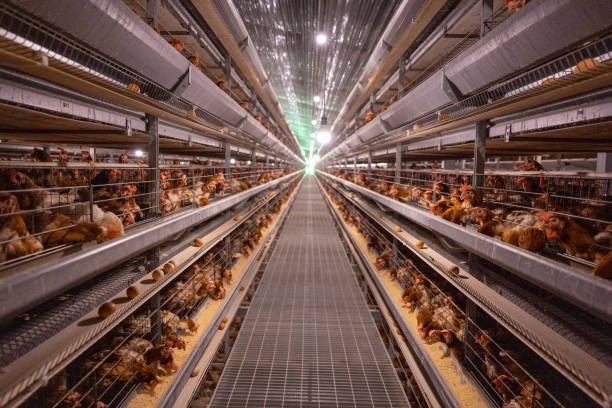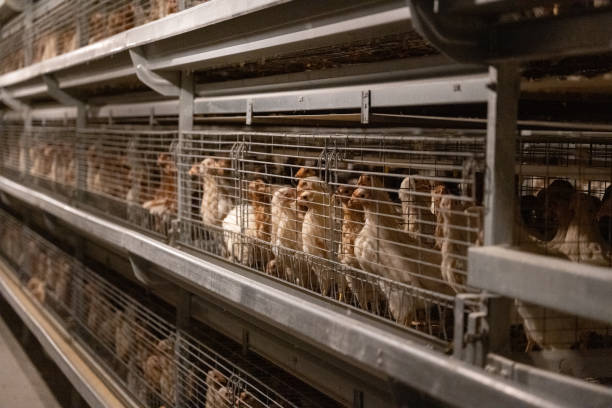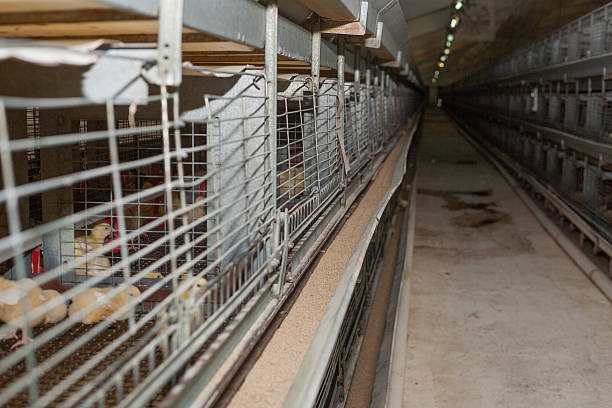
Layer Cage Systems for 15000 Birds in Tanzania
Layer Cage Systems for 15000 Birds in Tanzania
If you’re planning to start or expand a commercial egg-laying farm in Tanzania and are aiming for 15,000 birds, you’re likely weighing your options when it comes to housing systems. Among the most efficient, modern, and cost-effective solutions available today is the layer cage system. Designed for high-density, high-output poultry operations, these systems can help Tanzanian farmers maximize egg production while minimizing labor, feed waste, and disease risk. In this article, we’ll walk through why a layer cage system makes sense for a 15,000-bird operation in Tanzania, what components you need, how to set up the system properly, and tips on choosing a reliable supplier.
Why Choose Layer Cages for a 15,000-Bird Farm?
When running a commercial poultry farm, efficiency and scalability are crucial — especially in a growing market like Tanzania. A free-range or deep litter system might seem more natural, but they come with challenges: higher mortality rates, uneven egg collection, increased labor costs, and greater risk of pests and diseases. Layer cage systems solve many of these issues by offering a controlled environment that supports better bird health and consistent productivity.
For a 15,000-bird setup, a well-designed cage system can improve space utilization dramatically. Traditional floor systems require between 0.3 and 0.4 square meters per bird, while a three-tier cage system reduces that to just 0.06–0.08 m² per bird. That means you can house the same number of birds in less than a quarter of the building space — a huge saving on construction and maintenance costs.
Another major advantage is biosecurity. In Tanzania’s tropical climate, humidity and temperature fluctuations can lead to rapid spread of diseases like Newcastle and coccidiosis. With a cage system, droppings fall through slatted floors, reducing contact between birds and waste — which in turn lowers contamination risks. Automatic feeding and watering further reduce human contact and cross-contamination, giving your flock a much cleaner, more hygienic environment.
What Does a Complete Layer Cage Setup Include?

A full-scale 15,000-bird layer cage system isn’t just about metal cages — it’s an integrated ecosystem that includes several key components designed to work together seamlessly. Let’s break down what you’ll need:
Cage Structure: For 15,000 laying hens, a typical layout involves multiple sections of stacked cages, usually arranged in three or four tiers. Each tier holds hens at different stages — pre-layer, peak production, or end-of-lay — allowing for all-in-all-out management. The cages are made from galvanized steel wire to resist rust and corrosion, essential in Tanzania’s humid zones.
Feeding System: Manual feeding becomes impractical at this scale. An automatic chain feeder runs along the length of each row, delivering precise amounts of feed consistently. This not only saves labor (you won’t need dozens of workers scattering feed) but also prevents overfeeding and waste.
Watering System: Closed nipple drinkers are standard in modern setups. They prevent spillage, keep water clean, and reduce bacterial growth. Since chickens drink nearly twice as much water as they consume feed, ensuring constant access to fresh water is critical for egg production and heat stress management, especially during hot Tanzanian summers.
Egg Collection Belt: Eggs laid in cage systems roll gently onto conveyor belts below. These belts transport eggs to a central collection point, minimizing breakage and saving hours of manual pickup. For 15,000 birds producing around 85% daily, that’s roughly 12,750 eggs per day — trying to collect those manually would be time-consuming and error-prone.
Manure Removal System: Accumulated droppings create ammonia buildup and attract flies. A scraper or belt manure removal system automatically clears waste every 1–2 days, keeping the house dry and healthy. Some farms even compost the manure for organic fertilizer, creating an additional revenue stream.
Ventilation & Lighting: Proper airflow and light control are non-negotiable. In large houses, tunnel ventilation with exhaust fans and cooling pads helps regulate temperature. Programmable LED lights simulate optimal day-night cycles, encouraging consistent laying patterns.
How to Plan Your Installation in Tanzania
Setting up a 15,000-bird layer farm using cage systems requires proper planning to avoid costly mistakes. First, choose a location with good road access (for feed delivery and egg transport), away from residential areas due to odor and noise considerations. Avoid low-lying zones prone to flooding during rainy seasons.
Your poultry house should be long and narrow — typically 10–12 meters wide and 70–100 meters long — to allow for cross-ventilation. Insulated roofing helps reduce heat gain, and side curtains or shutters offer adjustable airflow. You’ll need around 1,200–1,400 m² of floor space depending on the cage design and aisle spacing.
Power supply is another key consideration. While some rural areas rely on generators, solar hybrid systems are becoming increasingly popular in Tanzania for powering fans, feeders, and lighting. Backup batteries or inverters ensure continuity during outages.
Before finalizing your equipment purchase, consult with a professional supplier who understands local conditions. They can recommend corrosion-resistant materials, appropriate cage density, and climate-adapted ventilation designs. It’s also smart to request training for your staff — knowing how to operate and maintain auto-feeders, egg belts, and controllers will extend equipment life and prevent downtime.

Choosing the Right Supplier: What to Look For
With several suppliers claiming to offer “modern” layer cages, how do you make the right choice? Start by verifying their experience with large-scale installations, especially in Africa. A reputable manufacturer like Livi Machinery has been supplying poultry farms across East Africa since 2012, tailoring systems to regional needs such as high temperatures, dust, and power instability.
Look for companies that offer turnkey solutions — from site assessment and design to installation and after-sales service. Modular systems are preferable because they allow future expansion without rebuilding the entire setup. Also, check if the cages are hot-dip galvanized (not just painted or electro-galvanized), as this offers superior rust protection against moisture and chicken waste.
Customer support matters too. Can they provide spare parts quickly? Do they offer remote troubleshooting or on-site technicians? Ask for references from existing clients in Tanzania or neighboring countries. Seeing a working farm firsthand builds trust and gives you real-world insights into performance and durability.
If possible, visit their factory or partner warehouse to inspect material quality. At Livi, we welcome customer visits to our Zhengzhou facility and offer virtual tours for international buyers. We’ve helped hundreds of African farmers successfully launch projects ranging from 5,000 to 50,000-bird systems — always focused on delivering durable, smart, and affordable solutions.
Ready to Scale Your Egg Business in Tanzania?
Whether you’re starting fresh or upgrading from a small backyard flock, investing in a layer cage system for 15,000 birds is one of the smartest moves you can make for long-term profitability. With the right setup, you’ll benefit from higher survival rates, lower labor costs, better egg quality, and faster ROI. But none of this happens without expert guidance and high-quality equipment.
We’d love to help bring your vision to life. If you’re considering a new poultry project in Tanzania, get in touch with us today. Share your farm size, location, and goals, and we’ll send you a free customized layout plan, including equipment list, space requirements, and estimated costs — all tailored to your specific needs. Don’t build your dream farm on guesswork. Partner with a proven supplier who knows what works in your region.
Drop us a message with your contact details, and let’s get started on designing the perfect layer cage system for your 15,000-bird operation.
Frequently Asked Questions (FAQ)
What is the ideal cage density for 15,000 layer birds?
You should allocate about 550–600 cm² per bird in production cages. That translates to roughly 8–9 birds per cage unit, depending on breed. Overcrowding reduces egg output and increases aggression, so sticking to recommended densities is important.
How much does a complete layer cage system cost in Tanzania?
Costs vary based on automation level and cage type, but expect to invest between $120,000 and $180,000 for a fully automated 15,000-bird setup. This includes cages, feeders, drinkers, egg belts, manure scrapers, and ventilation. We offer flexible pricing and shipping options to Tanzania.
Can layer cage systems handle Tanzania’s hot climate?
Yes — especially when combined with proper ventilation, shade, and insulation. Our systems are commonly used in Kenya, Uganda, and Tanzania, where temperatures regularly exceed 35°C. We equip houses with tunnel ventilation and cooling pads to manage heat stress effectively.
Are spare parts easy to find in Tanzania?

While local availability may be limited, we stock critical spare parts at our East Africa distribution points and can ship replacements within 7–10 days. We also train your team on basic repairs and preventative maintenance to minimize downtime.
How long do layer cage systems last?
With hot-dip galvanized steel and proper care, a quality cage system lasts 15–20 years. Our customers report minimal rust or structural wear even after a decade of continuous use in humid coastal regions.
Do I need electricity for the entire system to work?
Most automated features (feeders, egg belts, ventilators) require power, but semi-automatic versions exist for off-grid farms. Solar-powered setups are increasingly viable and cost-effective, especially with battery backups.
How many workers do I need to operate a 15,000-bird layer farm?
With automation, you can manage the whole farm efficiently with just 3–5 trained staff members. Tasks include monitoring health, collecting eggs, checking systems, and handling vaccinations — far fewer than needed for deep litter or free-range systems.
Is it difficult to install the cage system myself?
While possible, professional installation ensures correct alignment, belt tension, and electrical connections. We provide detailed manuals and video guides, and can dispatch a technician to oversee setup if needed.
Can I expand my farm later?
Absolutely. Our modular cage systems are designed for scalability. You can add extra rows or even build a second house using the same control systems and layouts.
Are there any government regulations for cage farming in Tanzania?
Currently, Tanzania promotes commercial poultry development and doesn’t ban cage systems. However, always check with local agricultural authorities regarding environmental standards, waste management, and business licensing before construction.
